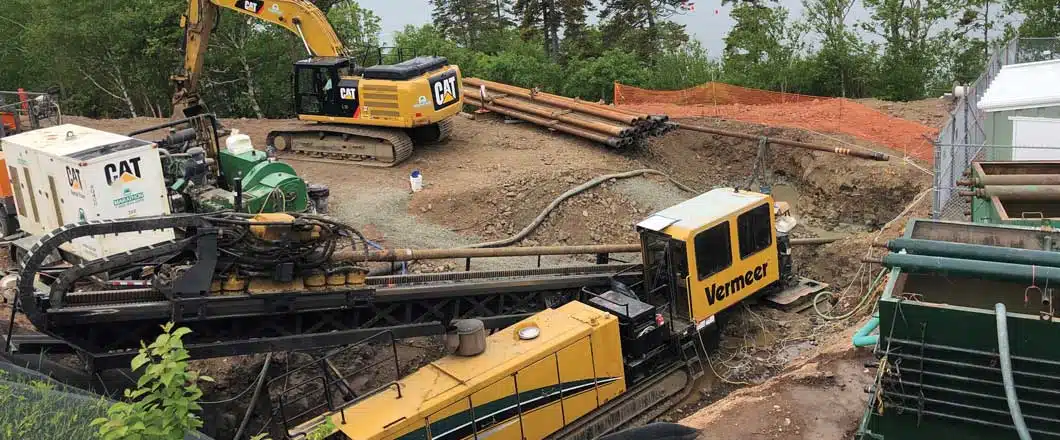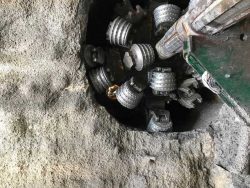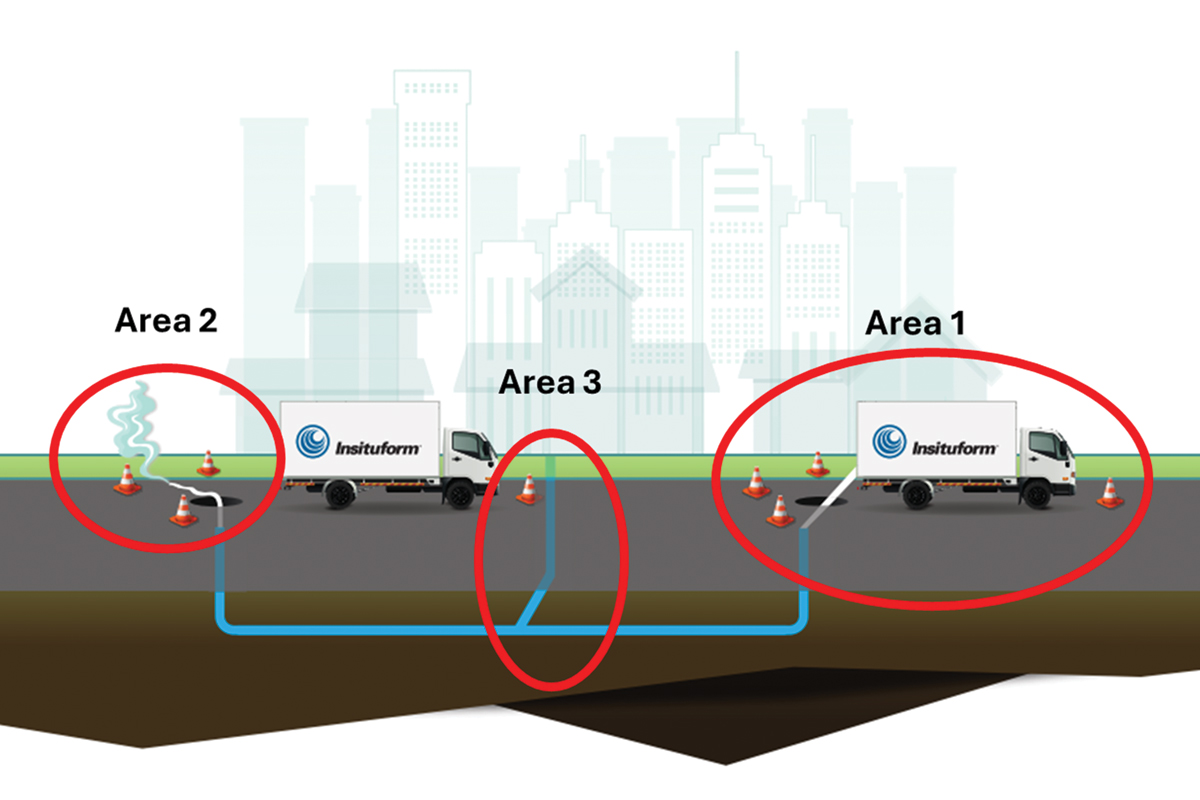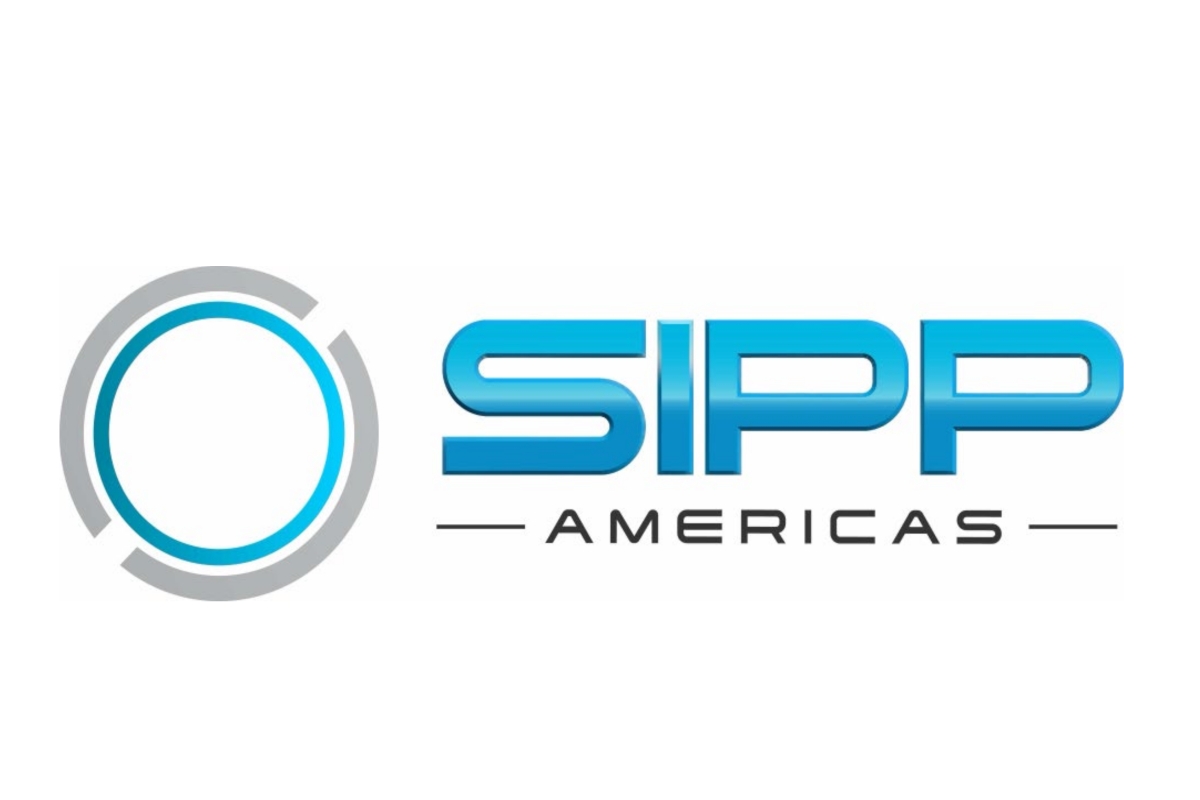
Marathon Underground Continues to Grow as an Underground Specialty Contractor
As Canada’s underground infrastructure needs upgrades due to age and to meet increased demand, system owners need quality partners to ensure projects are completed on time and on budget.
One contractor — Ottawa-based Marathon Underground Constructors Corp. (Marathon Underground) — has made it a mission to be that partner.
With more than 40 years of expertise in the underground construction space, the company has grown from a focus on vertical drilling for geotechnical and environmental engineers to being a true specialist in the underground new installation space.
Formed in 1981, Marathon’s growth was predicated by customer needs. In 1994, the company added to its trenchless services with auger boring, rock boring, pipe ramming and then horizontal directional drilling (HDD) and tunnelling in 2001. When a large sewer storage tunnel was planned in Ottawa, the company added slurry and earth pressure balance microtunnelling work in 2010. Along with that came large shaft construction and the added expertise of shoring and deep foundation and consolidation grouting group. The most recent addition to its offerings came in 2017 as more complex projects were going out to bid – an in-house geotechnical engineering group.
“That’s sort of unique. What we do with that group is use their expertise to value-engineer every project that comes along. Any project, whether it’s shoring or trenchless, gets reviewed by our in-house geotechnical team to look at ways to value-engineer any third-party designs or improve upon schedule and budget,” says Bruce Knight, vice president business and strategic development. “As a result, we tend to gravitate toward more complex projects and partnering in design-build opportunities, which is a big trend in the industry. We are a good partner to have…because we look to value-engineer and the complexity a project doesn’t scare us.”
RELATED: Pipe Ramming Across Mud Creek

Working Across Canada
Marathon Underground numbers 300 employees and is growing, Knight says, and the company is positioned to deploy to projects across Canada. In addition to its home office in Ottawa, it has a location and equipment yard in Alberta and an office in Quebec. It also has smaller yards in Sudbury and Kitchener-Waterloo for its geotechnical and environmental drilling division.
Divided into four divisions – Trenchless Technology & Tunnelling, Environmental & Geotechnical Drilling, Shoring & Deep Foundation and Ground Stabilization & Consolidation Grouting – Knight estimates that trenchless and tunnelling steadily represents about 50 per cent of the company’s work. He adds that its shoring and deep foundation work is the fastest growing segment of the business.
RELATED: Tapping Partners’ Expertise Critical to Success of HDD Project
Marathon Underground’s trenchless and tunnelling equipment fleet includes TT Technologies pipe ramming equipment, American Augers auger boring machines, Vermeer and American Augers HDD rigs, a digger shield, a Herrenknecht AVN 1200 microtunnel boring machine (MTBM) and an earth pressure balance (EPB) tunnelling machine.

Knight only sees continued growth for its trenchless division. In terms of new infrastructure, light rail transit (LRT) projects across Ontario and in major urban centers across Canada, is a growth area. Knight notes that much like a highway, any new infrastructure that passes under an LRT line must be done using trenchless construction methods.
Because of the already-crowded underground space, many system owners are looking at tunnelling and microtunnelling for the projects. This is also an area that Knight says is the most advanced for Marathon Underground.

“Our most advanced technology today would be the microtunnelling systems and the big horizontal directional drills,” says Mario Venditti, horizontal division operations manager, Marathon Underground. “Our first microtunnelling project was 10 years ago. It was a 4-km project in Winnipeg, Manitoba. Ten years ago, you wouldn’t see microtunnelling in a spec, and now it is all over the place.”
This, Venditti says, is because as the underground space gets more crowded, engineers are requiring that trenchless projects come in on line and on grade. As such, the tolerances on projects are tighter making an accurate and steerable method like microtunnelling key. Looking at the growth potential for microtunnelling, 2022 will bring the newest addition to the Marathon Underground fleet – an AVN 800 from Herrenknecht.
“There are a lot of smaller diameter jobs out there that are calling for microtunnelling and in the past we were upsizing the projects to fit our machine,” says Venditti. “Now, we will be able to install the size as designed, which makes us more competitive. Herrenknecht is a world leader in microtunnelling, and the machines are versatile with the capability of going through soft, mixed or hard rock ground conditions by switching the cutter heads.”
Benefits of In-House Engineers
The Marathon Underground team looks at each project as a collaboration between the owner, designer and contractor and have the project completed to the satisfaction of all involved.
“Our breadth of services really suits the larger design-build projects where you are working with a joint venture partner who is looking to deliver the project more cost-effectively and quickly. And they need a partner that can look at all the aspects of the project [construction, engineering, etc.] and is able to suggest alternatives,” says Knight.
RELATED: Pipe Ramming: Sometimes Bigger Isn’t Better
He relayed a recent tunnelling project where the company was able to do just that and save the project’s owner money. The owner’s original plans specified a specific piece of equipment because they were concerned about water intrusion. When Marathon Underground’s in-house team looked the plans, they proposed using a grout curtain. Doing so they were able to cutoff the water, use a different machine and made the project less expensive overall.
“This ended up saving the partner more than 25 per cent compared to their original design,” Knight notes. “That’s the special sauce with us. On the design-builds having this specialized breadth of services across different platforms and technologies makes us a good partner.”
Another project where having an in-house engineering division helped assist in the completion of a challenging job came in 2019. Marathon Underground was hired to complete the installation of a 500-mm diameter high-density polyethylene (HDPE) pipeline for the City of Shawinigan, Quebec.

Challenging HDD in Quebec
The plan was to install the new pipeline below the St. Maurice River, which is approximately 1 km wide using HDD. Because of length of the bore — through what was believed to be hard rock — the initial plan was to complete the HDD using the intersect method. The geotechnical reports indicated that there was ample overburden on each side of the river to install a case pipe.
“On the north side of the river, we installed our casing pipe, by ramming down to the bedrock,” says Venditti. “We went to the other side and realized during excavation that the geotechnical information was inaccurate. We dug down not even a metre and hit bedrock. We realized we would not be able to get a casing in and the intersect wasn’t going to work.”
Working with its in-house engineers and the client’s engineering team, Marathon Underground was able to come up with a plan to bore the entire crossing from the north side of the river. Using its Vermeer D330x500, crews worked round the clock to complete the pilot hole, three reaming passes and a final swabbing pass before pulling the pipe in place. But this wasn’t without its challenges.

“It made the hole a lot longer to complete in one shot. We were successful, but we had to deal with the mud and drill spoils,” says Venditti. “Access was a major issue because on the side where we installed the casing it was at the back of a farmer’s field, down a hill and wasn’t road accessible. We had to pump the mud to the other side for recycling.”
This required Marathon Underground to construct an overland bypass pump system with intermediate pumps to push the fluid uphill and the team piped the mud about 600 m to tankers and trucked it to the other side of the project for recycling. Because this was done in the winter, crews had to work round the clock to avoid freezing.
Though laborious, the HDD work was completed successfully, but the project’s challenges weren’t over. In the final pullback of the HDPE, the pipe end cap came ajar, and mud and spoils entered the pipe. This required cleaning the pipe with a jetter truck and pipeline pig until the HDPE was deemed clean and able to carry potable water.
“It was definitely a challenge, but we got it done,” Venditti says.
Knight adds, “This [project] highlights the benefits of our in-house engineering team. We adjusted on the fly to the situation. We were able to work with their engineers to get an alternate plan done quickly. We can present [engineering and construction] solutions, as opposed to stopping work and waiting to be told what to do. We collaborate to find the right solution.”

Looking Ahead
While these examples represent overcoming challenges during a project, Knight notes that the company is facing a major non-project specific challenge. That’s the challenge of finding quality help. As stated earlier, Marathon Underground is growing across all its divisions. New projects are being unveiled daily.
“There is no lack of work in the areas where Marathon operates. There always seems to be new projects trying to go into an already crowded underground space,” Knight says. “I’d say the biggest challenge to our growth is labor. It’s a huge challenge. This is work that involves travel, in all weather conditions, sometimes you are remote, and it is skilled work. We are always hiring and looking for good people as is everyone else.”
Marathon Underground is constantly looking for new workers and one of the ways it finds new people — and grow its offerings and in-house expertise — is through active involvement and attendance at industry events. This helps the team keep up with and learn about the latest innovations and learn new techniques to complete these challenging projects.
These associations are also a good benefit for the client, Knight explains, because it offers them a resource to evaluate and understand the trenchless options available to them as their infrastructure needs become more complex.
“Everyone is busy in the trenchless world despite the pandemic and the future is bright as infrastructure is becoming more complex and the underground space gets more crowded,” Knight says.
Mike Kezdi is the managing editor of Trenchless Technology Canada.




